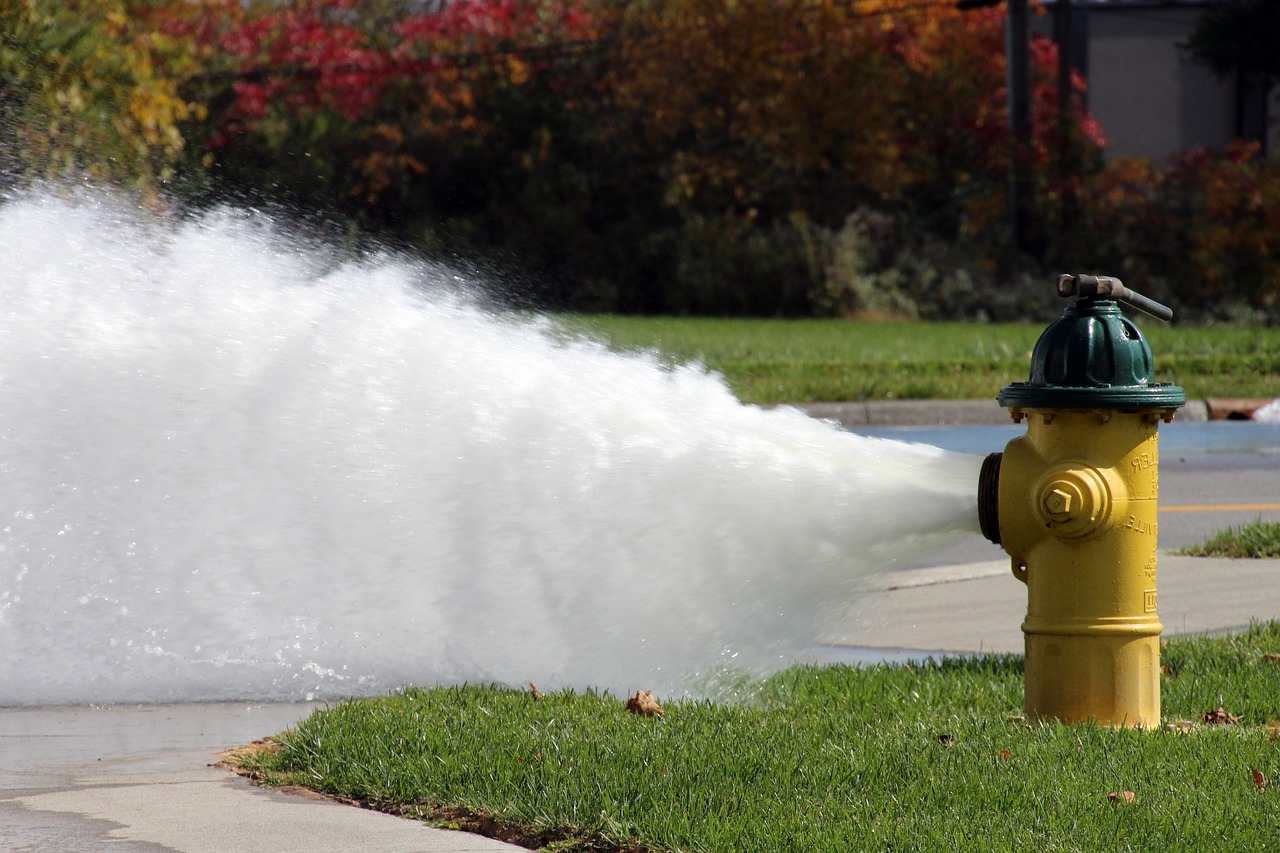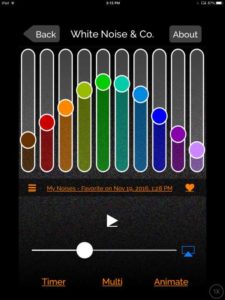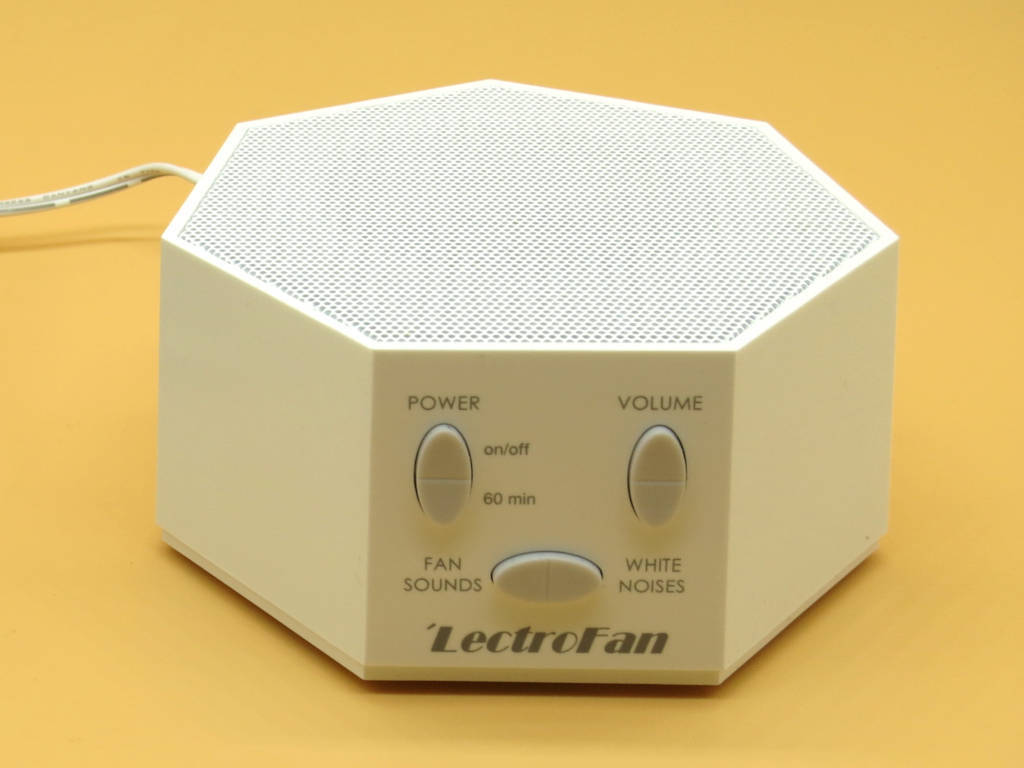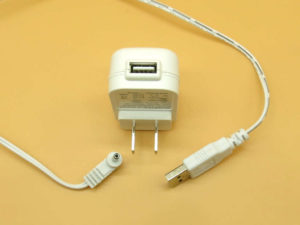In this post, we will look at the most suitable white noise machine for sleeping, and how to use it for maximum effect and fewest side effects. I have also summarized research findings regarding white noise and sleep.
Many years ago, I stumbled across my first sleep-aid sound conditioner by chance. At that time, my bedroom window was facing a small, but pretty noisy street. During winter, I used a small ceramic heater that had a fan to distribute the warm air. As it got warmer in spring, I was ready to put the heater back in storage.
I noticed, however, that it was a lot easier to fall asleep with the little heater running, so I even put up with a slightly overheated room just to get my fan noise.
Later I used a normal room fan. It wasn’t loud enough for me though.
A friend had the solution: I punched a few holes in a plastic bag and covered the fan with the bag. Voila – I had a loud white noise machine.
I am aware that this isn’t a safe way of doing things: So don’t try this at home. Don’t cover your fan with a plastic bag.
At that time I didn’t know, but there are a lot better solutions readily available…
Before we look at white noise machines that help with sleep, we need to know what people mean when they talk about white noise.
What is white noise and how does it differ from brown and pink noise?
White noise is what you get when you don’t tune your TV into any station. It sounds like this:
Technically speaking, it is broadband noise that encompasses the whole range of human hearing with equal power at each frequency point. But equal power doesn’t mean that we hear each frequency equally loud. Our ear is more sensitive at higher frequencies, and so pure white noise sounds “hissy” – not exactly like soothing ocean waves or a waterfall.
Most often, when you read or hear “white noise,” it is used as an umbrella term for all kinds of broadband noise. In this article, I am also going to use it as an umbrella term, with real white noise referring to the real thing!
Scientific studies examining white noise and sleep often use so-called pink noise, which is similar to white noise, but emphasizes the lower frequencies. To me, it sounds a lot more pleasant – and more like a stream of water:
What’s more, pink noise is usually more effective at masking disturbing environmental noises than real white noise.
Brown noise is even more tilted towards lower frequencies:
When you read about white noise having such and such beneficial effect, look for the details: what kind of noise are the authors really talking about?
Additionally, different speakers and headphones have different frequency responses.
Smaller speakers often aren’t very good at reproducing the lower frequencies. What may sound like pink noise when played through your home stereo or good headphones, will often sound like real white noise when played through your iPhone.
To make up for our individual hearing differences, different speakers and headphones, different room types, and a large variety of disturbing environmental noises, you ideally want a white noise machine that allows you to finely tune the color of your noise. You also want your machine to have a sufficiently large speaker to reproduce the bass.
Chances are that a sound conditioner with only one white noise setting and a tiny speaker won’t be the best fit for your bedroom or office.
Depending on your personal situation, you can employ a white noise machine in at least two different ways to help you sleep.
Masking disturbing environmental noises that occur during the night: For this, you need to have your machine play continuously throughout the night. Because the noise mix in a big-city bedroom is different from that in rural Arkansas, you want a machine that allows you to finely adjust the noise color from real white to brown. You also want to be able to set it really loud when necessary.
Helping you fall asleep: You might have trouble falling asleep even when there aren’t any disturbing noises around. White noise gives your mind something to focus on and replace worrying thought remnants of the day. For this, your sound machine needs a timer that automatically fades out the sound when you have gone to dreamland. All you might need is a soft, soothing sound:

Overview Favorite White Noise Machines for Sleep
Before going into more details, here are my favorite white noise machines for a good night’s sleep.
| Rank | Name | Why | Remark |
| 1. | Lectrofan Classic | Great sound and no loops Ten different white noise pitches plus ten fan sounds Easy to operate | Small enough for travel AC & USB power Can be set from very quiet to very loud—ca 80 dB Timer or continuous play |
| 2. | Marpac Dohm DS | Sound of a real fan Adjustable pitch Mechanical fan without the cold | Home use—quite large Only for domestic use (one voltage AC power) Max loudness ca 70 dB No timer |
| 3. | MyNoise App | Great app to play white noise with sleep earbuds or sleep headphones Finely adjustable white-noise pitch through ten-band equalizer Ambient sounds, sounds of nature, etc. | For iOS and Android phones Best for headphone use Timer or continuous play |
Which white noise machine should you get for sleep?
There are essentially 4 different types of white noise machine on the market:
1. Sound machines that play a selection of pre-recorded sounds: These machines often feature white noise plus soundscapes like ocean waves, rain noises, camp fire, and so on. Some of them sound really good. However, often, the recordings are only 10 to 20 seconds long. The machine simply loops – it repeats the same sequence over and over again.
For many people, these machines work fine, however if you focus, you might be able to hear when the recording ends and starts over. This looping startles sensitive people. Others stay awake, annoyed by the ocean waves featuring exactly the same seagull every minute or so.
2. White noise machines that electronically create white noise or fan sounds on the fly: With the sound coming out of these machines you can’t hear any loops. They usually don’t offer as many different soundscapes as the machines with pre-recorded sounds, but the sounds don’t repeat themselves.
What’s more, some offer to finely tune the pitch of the white noise from real white, over pink, to brown noise. This allows you to find the sound color you find most soothing, or the one that helps you to mask environmental noise at the lowest volume level possible.
My favorite white noise machine in this category is the Lectrofan.
The Lectrofan digitally creates 10 different white noise colors, ranging from white over pink to brown noise, and 10 different fan sounds. It runs on AC or USB power. Using a power bank, you could also run it on battery. It gets really loud, but can also be set very quiet. It can play white noise continuously, but also features a timer, fading the sound out after the preset duration. The timer can be set in increments of 60 minutes.
3. Fans in a box: These white noise generators actually contain a real fan inside, but they won’t blow cold air at you. By adjusting the fan speed, you can change the volume. Opening the vents more or less allows you to change the pitch. The sound of these machines is non-repetitive. Being mechanical, they are a bit heavier, use a bit more power, and don’t get as loud as the electronic ones. If you like fans, these can be great white noise machines.
Marpac has a 50-year history producing white noise machines. The Marpac Dohm DS (=Dohm Classic) is a mechanical white noise machine. The pitch of the white noise can be fine-tuned by twisting the housing of the machine. The Dohm DS features two fan speeds. You get a real fan without the chilling effect, and it sounds great.
The maximum volume can be set sufficiently loud for most applications, albeit not nearly as loud as the Lectrofan.
It is strictly AC and fixed voltage (120 volts), so keep this in mind if you intend to travel internationally like me. (There is an international version that runs on 240 volts.) The Dohm doesn’t have a timer, but you can buy a lamp timer if you only want to run it to fall asleep.
4. White noise apps for your smartphone or iPad: The quality of these varies. The worse ones work just like sound players, with discernible loops.
Good white noise apps create true random noise and thus are comparable with good white noise machines. These apps are a great choice if you prefer listening to white noise with earbuds or sleep headphones, for example to drown out snoring noise.
You can create a fully-featured white noise machine by adding a decent Bluetooth speaker. The downside: continuously playing white noise over your smartphone will likely shorten your battery life, and with smartphone batteries not being user-replaceable these days, this might prove expensive over time. But if you only need to play white noise every night for 60 minutes to fall asleep, an app might be all you need.
My favorite white noise app is myNoise, created by Belgian research engineer and sound designer Dr. Stéphane Pigeon. myNoise features a ton of different sound generators, including white noise, fan noise, rain noise, ocean waves, space sounds, and binaural beats, to name just a few. It also includes a timer, allowing you to slowly fade out the sound after a pre-set time.

What sets this app apart from all other apps and white noise machines I know is how finely you can adjust the pitch of the white noise. (Ten sliders allow you to make adjustments at 10 different frequency points.)
You can even have the app listen to your environment via your smartphone’s built-in microphone and automatically adjust the noise color to mask your predominant environmental noise. This app is great if you want to listen to white noise via sleep headphones or earbuds. Wearing earplugs underneath the headphones, you can combat even serious snorers.
The app is available for iPhone/iPad and Android.
Its main advantage is also its main disadvantage: It uses your phone. If you want to run it continuously during sleep, it may shorten your battery life, and replacing an iPhones’s battery isn’t cheap. On the other hand, good sleep is priceless.
How and when to use your white noise machine for sleep?
Masking environmental noise and snoring
Generally, whenever you have trouble falling or staying asleep because of environmental noise, such as traffic noise, railway noise, a creaking floor, or people talking in a neighboring room, try a white noise machine before resorting to any form of sleeping medication.
A sleeping pill that puts you to sleep and keeps you asleep even in the presence of startling noises doesn’t come without severe side effects.
If you can stand earplugs, playing white noise via headphones and wearing earplugs underneath is effective even against most serious snorers.
Inducing sleep
If you want to use white noise to induce sleep in the absence of disturbing noises, set the timer of your machine to 60 minutes. Ideally, you want a machine that slowly fades out the sound, so a sudden absence of noise doesn’t wake you up.
We know that white noise can slightly alter our sleep, with REM sleep being shortened and stage-2 sleep being prolonged. So if you only need it to induce sleep, there is no need for it blast at you for the whole night.
Similarly, if you use if for your baby, I would try a timer before resorting to continuous noise.
On the other hand, if all-night environmental noise is bothering you, that noise is certainly changing your sleep for the worse: you get more awakenings, less time spent in recuperating slow wave sleep, an increased heart rate, and even an outright stress response with increased adrenaline and cortisol levels.
In that case, I’d much prefer the slight changes that occur to my sleep due to continuous white noise.
Louder isn’t always better
You need a certain volume if you want to drown out disturbing noises, so you want a machine that can deliver the volume you need. However, I would keep the level as low as possible. Instead of increasing the volume of your white noise machine, first try a different noise color and see whether it better masks the intruders or allows you to relax more easily.
For this, you need a white noise machine that allows you to finely adjust the color of your noise, rather than one with a single white-noise setting.
Making sure your baby stays safe
For babies, try to stay below 50 dB(A). You can get an idea of how loud 50 dB is, by using an app like NoiSee or a sound level meter and placing it where your baby sleeps.
What is the best white noise machine for snoring?
Snoring noise varies considerably in intensity. The constant ups and downs, combined with sudden peaks can keep a non-snoring partner or roommate from falling asleep or even wake them up during a lighter sleep stage.
This is where a white noise machine comes in: by providing a constant white noise or ambient sound background, it renders the snore peaks less pronounced and startling and gives your mind something else to focus on.
If your snoring partner is a moderate snorer or doesn’t sleep directly next to you, a white noise machine on your bed stand by itself can be very effective.
If he/she is a real saw, you might have to add some other “weapons.”
Snoring can be loud, so you want your white noise machine to be loud as well.
The Lectrofan is a good white noise machine to mask snoring. You can finely adjust the pitch of the white noise to drown out the snoring at the lowest possible volume.
Not everyone snores the same way, so this is very important.
What’s more, its volume range is huge, a lot larger than the Marpac Dohm’s. It can be set from very quiet (about 30 dB) to really loud (about 80 dB):
At its maximum volume, the Lectrofan is twice as loud as the Dohm (about 70 dB).
Note: 10 dB more is being perceived as about twice as loud.
But if you have to set your white noise machine to its maximum volume, how can you and your partner possibly fall and stay asleep?
The answer is: both of you will likely have to wear good snore blocking earplugs.
I know that solution sounds a bit like a hassle, but it is actually quite effective and in my opinion the most comfortable solution for side sleepers.
I often use white noise together with earplugs when staying in hotel rooms to keep out TV, chatter, dripping water, and snoring noise from adjacent rooms. Sometimes the walls between rooms are just too thin.
Another great solution is to play white noise through sleep headphones using the app myNoise. First adjust the pitch and volume of the white noise to drown out what bothers you.
If you need to set the volume too loud for you to feel comfortable, again use earplugs underneath. This adds an additional layer of noise blocking.
Combining noise masking with noise blocking is the most effective weapon against loud snoring I have found so far.
To learn more, please read my post on the most effective ways to block snoring noise.
What the science says: Does white noise really help you sleep?
Surprisingly, not that many experiments have been done that have examined the influence of continuous white noise on sleep.
The ones that have been done have generally found that white noise helps people to fall asleep and stay asleep.
Noise masking reduces arousals and improves sleep duration and sleep quality
Intensive care units (ICUs) are loud places with lots of noise from medical equipment and people talking. Researchers wondered whether adding white noise to this noisy environment would help to reduce the number of arousals. The result: The number of arousals was significantly lower when white noise was added as a masking sound to ICU noise.[1]
Adding noise obviously doesn’t make the room quieter, yet people woke up a lot less. The researchers concluded that the changes in noise level rather than the noise itself were disturbing people’s sleep.
This experiment illustrates the efficacy of a frequent application of white noise machines: Adding a masking noise improves sleep by reducing the difference between background and peak noise. Most people know this intuitively: It is the sudden noises that startle and wake people up and not the rather constant noise backdrop of a fan or waterfall.
Other experiments have confirmed this: adding 50 dB white noise during the noisiest times in a coronary care unit allowed a group of angina patients admitted to that unit to maintain their sleep quality over three days, while the sleep quality and duration of a control group significantly deteriorated during the same time period.[2]
So white noise helps with sleep by masking unwanted and sudden noises. But does it also exert magic by itself?
Can you use white noise to induce sleep in adults? How about helping babies fall asleep?
In a small experiment, Dr. Kawada and Suzuki found a >50% reduction in the time to fall asleep (sleep onset latency) when subjects (aged 19-21 years) were exposed to continuous 60 dB(A) pink noise, compared to control nights when the background noise was a modest 33 to 37 dB(A). (This is about as loud as my bedroom during a quiet night.) The researchers concluded that the pink noise made sleep induction easier.[3]
In a different study, twenty babies were randomly chosen from a group of 40 and exposed to white noise (72.5 dB for 30 seconds, followed by 67 dB for 4 minutes). The other twenty babies had the white noise machine next to them switched off. 80% of the “noise” babies fell asleep within 5 minutes, while only 25% of the control babies managed to do the same.[4]
Caveat: This noise level may not be safe for children this young if played for a longer duration.
If you want to use a white noise machine to help your baby sleep, try to keep the volume at 50 dB(A) or less.[5]
How do you know how loud your white noise machine is? While not as accurate as a sound level meter, an app like NoiSee (iOS) can give you a good indication of the noise level where your baby sleeps.
With babies, there is also the concern that continuous white noise might delay proper organization of the auditory cortex. This concern stems from a study done with rat pubs, which were reared under 70 dB continuous white noise, 24 hours per day, for between 10 and 90 days. The pubs exhibited a delayed development of the auditory cortex. Normal organization started after the white noise source had been removed.[6]
Can this study be extrapolated to humans?
I take from it that you shouldn’t expose your baby to white noise 24 hours a day. Babies need environmental noise, including speech, to develop normal hearing.
Do white noise and pink noise alter our sleep? Do they make sleep better or worse?
Studies led by Dr. Suzuki and Dr. Kawada in Japan found a sleep-deepening effect of continuous pink noise.[7]
However, REM sleep duration as a fraction of total sleep time was shorter and stage-2 sleep increased.[8]
To this day, we aren’t completely clear as to the function of REM sleep. During this stage, we dream our most vivid dreams, and these are also the dreams we usually remember. Slow wave sleep (stages 3 and 4) has been implicated with recovery and consolidation of memories. However, there is some indication that REM sleep also plays a role in memory.
So pink noise seems to slightly change the architecture of our sleep, and I am not sure whether these changes are all for the better.
Is white noise then better than a sleeping pill?
As long as the white noise works, for me, this is a clear Yes.
Most generally prescribed sleeping medications mess with our sleep architecture a lot more than white noise and can be physically addictive.
City and traffic noise, dog barks, and other intermittent noises can lead to increased stress hormone levels and insomnia.[9]
Provided masking these intruders with white noise helps me to fall and stay asleep, I clearly prefer this over popping a pill.
What’s more, if outside noises and awakenings aren’t your problem, yet you just can’t fall asleep, a white noise machine with a timer might be all you need. After 60 minutes or so, when you are long gone to dreamland, the machine slowly fades out the noise.
I don’t recommend showering yourself with white noise or pink noise if you don’t have a sleeping problem in the hope of somehow enhancing your sleep. But if you do have a problem falling or staying asleep, I would give it a go.
Carefully timed pink noise during slow wave sleep boosts slow wave activity and improves memory
Our deepest sleep (stages 3 and 4) is made up of slow wave sleep (SWS). SWS is important for physical recovery and repair and the strengthening and consolidation of new memories. Unfortunately, as we age, we spend less time in slow wave sleep.
In a very recent experiment at Northwestern University with older adults (60-84 years), researchers used carefully timed pink noise bursts during slow wave sleep. The pink noise pulses were synchronized with the slow waves that appear during SWS.
The result: Pink noise enhanced slow wave activity and significantly improved memory recall of previously learned word pairs.[10]
Unfortunately, a normal white noise machine won’t do if you want to try this at home. In the experiment, the pink noise pulses were synchronized with the participants’ brainwaves. The researchers used an EEG to record sleep, had a computer program detect slow wave activity in the EEG, and then apply timed pink noise burst of 50 ms.
Since three of the researchers have applied for a patent for the algorithm, we might be able to get our hands on a device for home use at some point in the future.
Recap
White noise machines help to drown out disturbing noises and induce sleep outright. They have been found effective for all age groups, from babies to young adults to older people. The ideal white noise machine features multiple sound colors and a timer, and can be set really loud as well as really quiet. For babies, make sure that the sound level doesn’t exceed 50 dB(A).
My favorite white noise machines for sleep
- The Lectrofan: Easy to use white noise machine. The Lectrofan dynamically creates 10 non-repeating noise colors, as well as 10 different fan sounds. It is light and powerful, features a timer, and is suitable for home and office use, as well as domestic and international travel.
- The myNoise white noise app: Great if you want to listen to white noise using headphones, for example, to block out a snorer. You can finely tune the pitch of your white noise using 10 different frequency sliders. It also features a timer and allows you to experiment with lots of additional sound generators, including ocean waves, rain, and binaural beats.
- The Marpac Dohm DS: This is the machine to try, if you want a real mechanical fan. The Dohm has two fan speeds; the pitch of the white noise can be adjusted by twisting the housing. It is slightly heavier than the Lectrofan, its volume range is smaller, and it consumes more energy. It doesn’t have a timer, but you can use it together with a lamp timer. For domestic use.
Do you currently use a white noise machine for sleep? What is your secret sauce? I’d be happy to learn more about your experience in the comment section.
Apart from sleep, white noise machines can also be used to help you study and work. To learn more, read Is White Noise Good for Studying and Work and How to Block out Noise before It Kills Your Work and Study Performance.
Good night and sweet dreams.
Notes:
- See White Noise Machines and Sleep Notes for references.
- Meteli. Sound Sample from Ten Minutes of White Noise, Pink Noise and Brownian Noise (Public Domain). Accessed January 1, 2018. Ten Minutes of White Noise.
- Image credits:
- Waterfall torrent, by Bogitw via Pixabay.com
- Hydrant flushing, by Macdeedle via Pixabay.com





This was crazy helpful; thanks so much! I got so confused when I saw white noise machines for $50, and you did a great job explaining what makes them better quality.
Hello Max,
thank you very much for stopping by.
One additional point:
I have found that for optimal noise masking, the white noise machine needs to have a pretty good frequency response.
Even if it has a great sound generator, if the speaker is tiny, it won’t able to reproduce lower pitched sounds. This can limit what kinds of noise you can mask.
All the best.